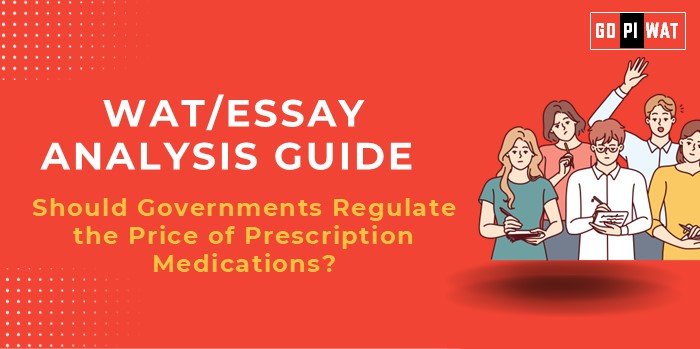📋 Group Discussion (GD) Analysis Guide: Should Governments Regulate the Price of Prescription Medications?
🌐 Introduction to the Topic
Opening Context: Access to affordable healthcare is a critical issue worldwide. Prescription drug prices, often exorbitant, can determine life or death for many patients. This topic is particularly relevant for future leaders in healthcare, business, and public policy.
Topic Background: Rising prescription medication costs have sparked debates over government intervention. Countries like the USA face extreme costs, while others, such as Canada, regulate prices to ensure affordability.
📊 Quick Facts and Key Statistics
– 💵 U.S. Prescription Costs: Average annual expense of $1,200 per capita – Among the highest globally.
– 🇮🇳 India’s Market: $50 billion by 2025 – Price caps on essential drugs ensure affordability.
– 🇨🇦 Canada’s Drug Prices: 20-40% lower than the U.S. – Due to price regulation policies.
🤝 Stakeholders and Their Roles
- 🏛️ Governments: Frame and enforce price control regulations.
- 💊 Pharmaceutical Companies: Balance profitability with accessibility.
- 🧍 Patients and Advocacy Groups: Advocate for affordable, equitable access.
- 🏥 Healthcare Providers: Ensure prescriptions meet patients’ financial constraints.
- 🌍 International Organizations: Promote best practices and guidelines for equitable access.
🏆 Achievements and Challenges
✨ Achievements
- ✅ India’s National Pharmaceutical Pricing Authority (NPPA): Capped prices for 355 essential drugs, saving ₹12,500 crore annually.
- 📉 Canada’s Patented Medicine Prices Review Board: Lowered drug costs by 20%.
- 🌍 WHO’s Essential Medicines List: Guides affordable access globally.
⚠️ Challenges
- 💡 Pharmaceutical Innovation vs. Profit: Price caps may discourage R&D.
- 🔍 Regulatory Evasion: Companies introduce minor drug modifications to bypass price control.
- 🌍 Global Disparity: Poorer nations struggle despite lower prices.
🌍 Global Comparisons
- 🇺🇸 U.S.: Minimal regulation leads to highest costs.
- 🇩🇪 Germany: Fixed pricing agreements ensure affordability without stifling innovation.
💡 Case Studies
- 🇮🇳 India’s NPPA: Price caps for heart stents and knee implants reduced costs by up to 70%.
💬 Structured Arguments for Discussion
Supporting Stance: “Government regulation ensures essential medications are accessible to all, preventing exploitation.”
Opposing Stance: “Price controls discourage pharmaceutical companies from investing in life-saving research.”
Balanced Perspective: “A middle ground of capped pricing with subsidies for innovation fosters access and development.”
📚 Effective Discussion Approaches
- 📊 Opening Approaches:
- 📈 Begin with Statistics: “In the U.S., patients spend $1,200 annually on prescriptions compared to $500 in Canada.”
- ❓ Raise a Moral Question: “Should profits determine access to life-saving drugs?”
- 🤝 Counter-Argument Handling:
- 📉 Comparative Analysis: “Germany’s pricing system balances affordability and innovation.”
- 💡 Collaborative Solutions: “Public-private partnerships can subsidize R&D.”
🔍 Strategic Analysis of Strengths and Weaknesses
– ⚠️ Weaknesses: May discourage innovation and lead to shortages.
– 🌟 Opportunities: Incentivizing affordable innovation, global pricing agreements.
– ⚠️ Threats: Resistance from pharma giants, potential for black-market growth.
📈 Connecting with B-School Applications
- 🌍 Real-World Applications:
- Explore policies balancing public health and profitability, ideal for projects in healthcare management.
- ❓ Sample Interview Questions:
- 💬 “How can pharmaceutical companies balance profits and accessibility?”
- 💡 “Discuss international models for regulating prescription drug prices.”
- 📖 Insights for B-School Students:
- Understand healthcare economics, policy trade-offs, and strategies for corporate social responsibility.


